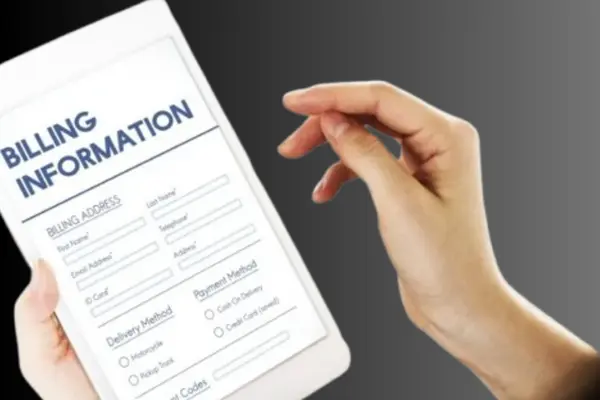Billing has evolved from a transactional requirement to a crucial element of financial management, customer happiness, and business scalability in the dynamic world of digital commerce and enterprise operations. Knowing bill ing systems, its parts, and best practices can provide firms a competitive edge as they expand and adjust to global trends. This comprehensive guide provides strategic clarity and actionable insights into all aspects of bil ling.
Billing: What Is It? A Explicit Definition
The process by which a company sends bills to clients for goods or services rendered is known as billing. It includes the preparation, administration, and distribution of invoices, guaranteeing accurate revenue tracking and prompt payment receipts.
Important elements of a billing procedure consist of:
- Invoice creation
- Tax calculations
- Payment terms and methods
- Automated reminders and reconciliation
- Customer record management
An efficient bil ling process streamlines cash flow, reduces administrative overhead, and minimizes disputes.
Types of Billing Systems
Different businesses require different bil ling models based on their operations. Here are the primary types:
1. Recurring Billing
Used primarily in subscription-based services, such as SaaS or streaming platforms, recurring bil ling charges customers at regular intervals—monthly, quarterly, or annually.
Advantages:
- Predictable cash flow
- Automated invoicing
- Improved customer retention
2. Time-Based Billing
Common in law firms, consultancies, and freelance services, time-based bil ling calculates charges based on hours worked or tasks completed.
Tools Required:
- Time tracking software
- Rate configurations
- Detailed logs for transparency
3. Milestone-Based Billing
Ideal for project-driven businesses, this method involves issuing invoices upon the completion of predefined project stages.
Examples:
- Software development phases
- Construction benchmarks
- Design deliverables
4. Usage-Based Billing
Used in telecommunications, utilities, and cloud services, this model charges based on consumption.
Bil ling Parameters Include:
- Units consumed
- Tiered pricing
- Threshold notifications
The Importance of Automated Billing Systems
Manual bil ling is prone to errors, delays, and inefficiencies. As businesses scale, automated bill ing systems have become the gold standard.
Features of an Automated Bil ling System:
- Customizable invoice templates
- Real-time tax calculation and compliance
- Multiple payment gateway integrations
- Automated payment reminders
- Subscription and usage tracking
- Multi-currency and multilingual support
Popular Automated Bil ling Tools:
- QuickBooks
- Zoho Books
- FreshBooks
- Xero
- Chargebee
- Stripe Billing
Automation not only accelerates revenue cycles but also provides detailed analytics and enhances customer experience.
Best Practices for Effective Billing
To ensure consistency and efficiency in bil ling, businesses should adhere to industry-leading practices.
1. Clearly Define Payment Terms
Each invoice should include:
- Due date
- Late fees (if applicable)
- Accepted payment methods
- Contact information for disputes
2. Maintain Detailed Records
Every transaction must be documented for:
- Auditing
- Dispute resolution
- Regulatory compliance
3. Use Itemized Invoicing
Break down services or products to avoid confusion. Include:
- Item description
- Unit cost
- Quantity
- Total cost
4. Enable Multiple Payment Methods
Provide options such as:
- Credit/Debit cards
- Bank transfers
- PayPal
- Mobile wallets
- Cryptocurrency (in modern tech-forward businesses)
5. Ensure Data Security
Bil ling systems must comply with:
- PCI-DSS (Payment Card Industry Data Security Standard)
- GDPR for European clients
- Local tax regulations
Use encryption, two-factor authentication, and role-based access.
Typical Billing Issues and How to Solve Them
1. Late Payments Solution:
Penalties for late payments, early payment discounts, and automated reminders.
2. Inconsistencies in invoices
Solution: Use workflows for invoice approval, standardize invoice forms, and double-check entries.
3. Multi-Currency Complexity Solution:
Make use of bil ling systems that accommodate current exchange rates, regional laws, and tax compliance.
4. Cancellations and Refunds for Subscriptions
Solution: Provide prorated returns in the event of cancellations and establish transparent refund policies.
The Role of Billing in Customer Satisfaction
Transparent and seamless bil ling significantly impacts customer trust and retention.
Customer-Centric Bil ling Features:
- Self-service portals for invoice history
- Automated receipts
- Easy-to-understand summaries
- Mobile-friendly access
According to recent surveys, 68% of customers are more likely to stay loyal to companies with clear, consistent, and easy bil ling processes.
Billing and Taxation: Staying Compliant
Handling taxes correctly is a legal obligation and essential for risk management.
Key Considerations:
- Sales tax, VAT, or GST calculations
- Country-specific digital services tax
- Withholding tax (for international clients)
- Real-time e-invoicing mandates in some jurisdictions
Consult with tax professionals and invest in bil ling software with built-in compliance tools.
Upcoming Developments in Billing Systems
1. Integration of AI and Machine Learning
Forecasting, automated problem solving, and revenue recognition are all being transformed by AI.
2. Invoicing using Blockchain
In the legal and financial industries, decentralized and impenetrable bil ling records are becoming more and more important.
3. Embedded Payments
APIs now enable the sending of invoices with “Pay Now” buttons embedded therein, which easily connect to accounting and banking programs.
4. E-invoicing for Real-Time Invoicing
To reduce tax evasion and increase transparency, nations including Saudi Arabia, India, and Italy are requiring e-invoicing.
Conclusion
Efficient bil ling is essential to every organization. Businesses can boost growth and strengthen their position in the market by embracing automation, maintaining transparency, and staying compliant. Simplifying your bil ling system is crucial for long-term profitability and operational success, regardless of your company’s size.















Leave a comment